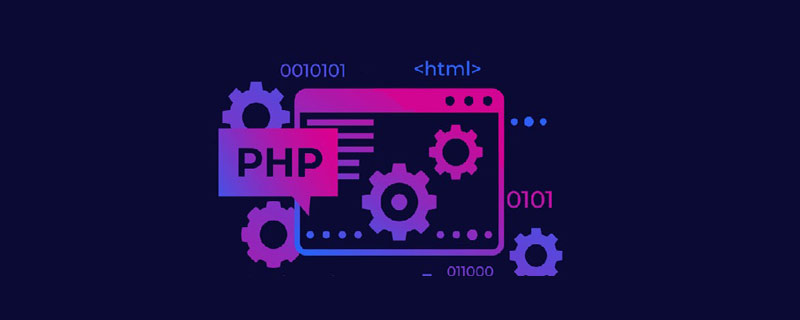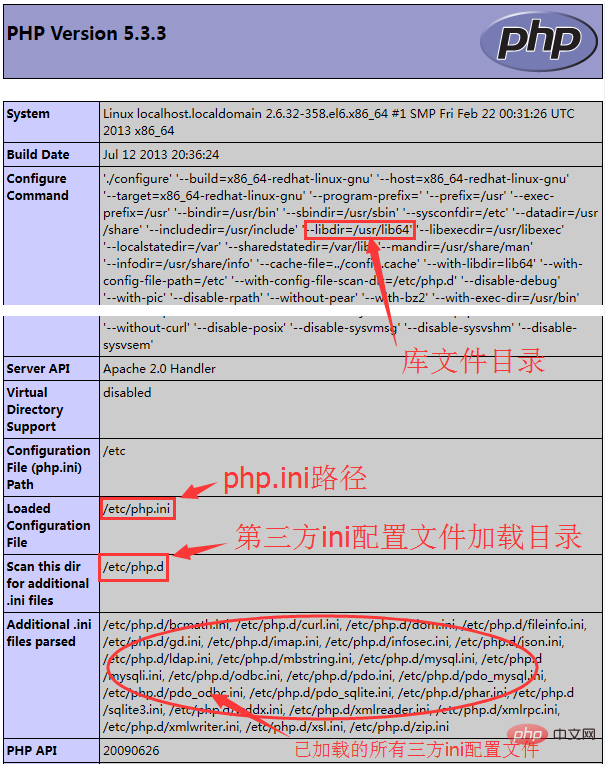
How to install PHP extension module under Linux: First, determine the storage location of PHP configuration files, library files, and logs; then install the dynamic link library; then configure PHP loading, the code is [extension = XXX.so # Or absolute path]; finally restart the service.

How to install PHP extension module under Linux:
1. Find the correct location
Before installing the PHP extension module, the first thing to do is to find out the storage locations of PHP configuration files, library files, and logs; fortunately, PHP provides us with a configuration details overview functionphpinfo ()Based on the output of this function, we can know everything.
Taking CentOS as an example, the output result is as follows:

Based on the above information, we can know where our third-party library should be placed. Here we know: /usr/lib64/php
Note: Scan this dir for additional .ini files, this item is specified by compiling PHP using --with-config-file-scan-dir.
2. Install the dynamic link library
From the above phpinfo output information, we can see that the path where PHP stores the extension module library is /usr/lib64/ php, then first we enter the terminal and check what is in the /usr/lib64/php directory.

modules and pear, obviously should be the modules directory, and the list found that it is really this directory.
At this time, you only need to copy the third-party dynamic link library .so component here. At the same time, you need to pay attention to ensure that the file attributes are the same as other .so files.
3. Configure PHP loading
After installing the .so dynamic link library file, you still need to load it in php.ini configuration.
This is the same as window loading .dll file.
Since the php configuration in the above picture is configured with a Scan this dir for additional .ini files, you only need to create a new one in /etc/php.d An ini file, just add:
extension = XXX.so # 或绝对路径
according to other files.
4. Finally
In order to verify whether our ini file is effective, we only need to restart the server, and then refresh to view the Additional output of phpinfo(). ini files parsed, whether this item is associated correctly.
Also check whether there are any errors in the error log file specified in the error_log item set in php.ini.
Related learning recommendations: PHP programming from entry to proficiency
The above is the detailed content of How to install PHP extension module under Linux?. For more information, please follow other related articles on the PHP Chinese website!